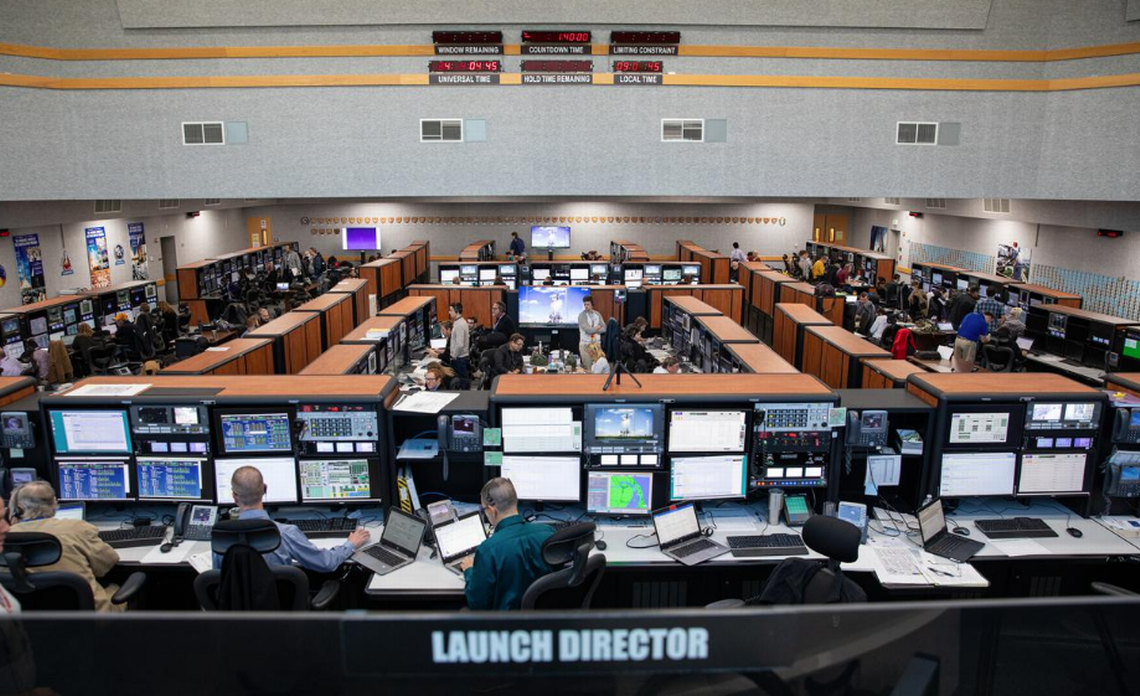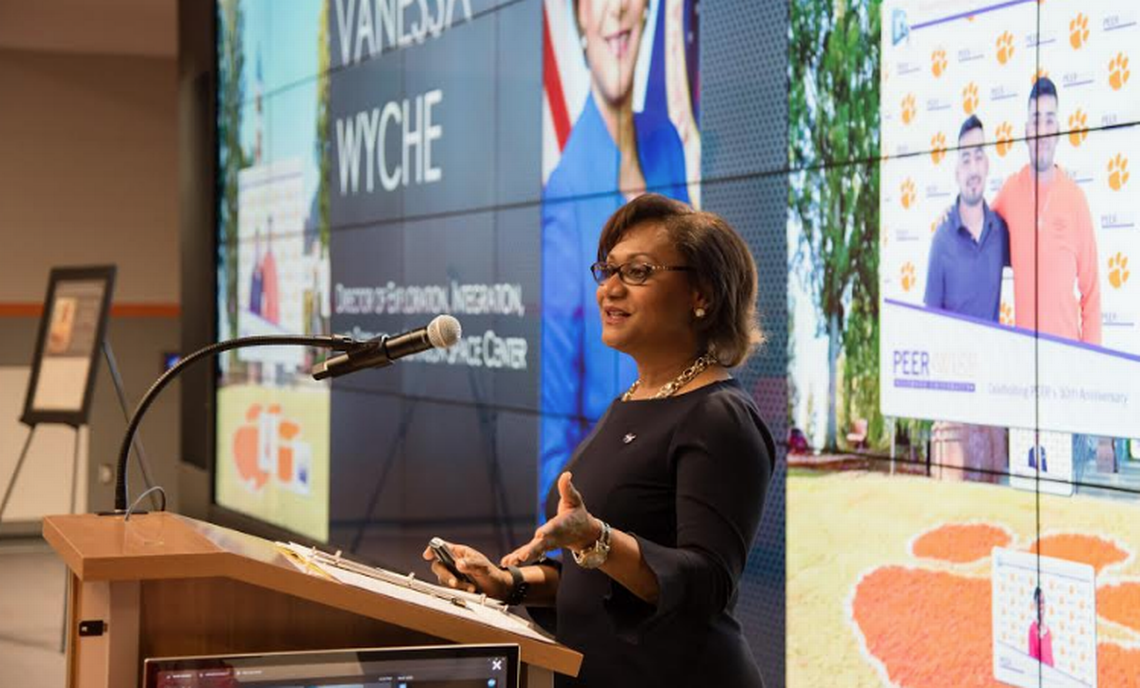Meet the 2 SC women leading NASA teams for the Monday Artemis moon launch
A few years ago, Vanessa Wyche was in the launch control complex at Kennedy Space Center when she saw a woman wearing a Clemson University lanyard attached to a NASA badge.
“Hey,” she said excitedly to Charlie Blackwell-Thompson.
Despite studyingat Clemson’sengineering department for a few years at the same time, the women had never met.
But their stories are remarkably similar. Wyche is the director at the Johnson Space Center in Houston. Blackwell-Thompson is the launch director at the Kennedy Space Center on Merritt Island, Florida, where the unmanned spacecraft Artemis is scheduled to launch between 8:33 a.m. Monday.
Both women are working on America’s return to the moon, where astronauts will build a base to enable missions to Mars.
Both are the first women in their high-profile jobs and, often were the first women in the jobs they’ve held during their three-decade NASA careers
“Nobody is looking at what you look like,” Wyche said. “They’re looking at can you solve the problem.”
Neither of them were children who dreamed of space, but each was set on her path by a teacher in a public school in South Carolina.
Wyche
For Wyche, that teacher was Mrs. Lane, a biology teacher at Conway High School. Lane saw a young woman with a curious spirit who liked to fix things. Wyche excelled in biology.
“You can do this as a career,” Wyche remembers Mrs. Lane telling her.
Both Wyche’s parents were educators, and education for their four daughters included learning how to fix a car and for their son, cooking lessons.
Her brother was the first in the family to go to Clemson; the others went to the University of South Carolina, Charleston Southern and Benedict College.
Wyche started out in biochemistry but quickly switched her focus to engineering.
“I found the true joy of learning how to solve problems,” she said.
She was one of the few women in engineering at Clemson in the 1980s. Some professors were not used to having women in their classrooms. But Wyche learned the great equalizer was being able to do the work. And hard work was not foreign to her.
She earned bachelor’s and master’s degrees and in 1987 headed for a couple of years to work on medical devices at the U.S. Food and Drug Administration in Washington, D.C.
She met the man who would become her husband, George Wyche Jr., and they moved to his hometown, Houston.
Blackwell-Thompson
The pivotal conversation for Blackwell-Thompson was with a longtime physics teacher at Gaffney High School, Doc Wilson. She excelled in his class. Math just made sense to her. It was logical and could be used in a variety of subjects, Blackwell-Thompson said.
Wilson advised her to study engineering.
“What can I do with engineering?” she said.
“What can’t you do?” he answered.
As a senior at Clemson, she interviewed for a job testing software at the Kennedy Space Center for contractor McDonnell Douglas. She knew when she walked into what they call the firing floor — which is seen on television during each countdown — she wanted to work there.
She got the job. A month later, in 1988, Space Shuttle Discovery lifted off, representing a return to flight after the Space Shuttle Challenger explosion that killed the seven crew members, including Ron McNair, a fellow South Carolinian.
She was new, but she couldn’t help but see the pride and dedication of the team.

Blackwell-Thompson was involved in every shuttle mission after that in one way or another. She remembers driving into the space center on launch mornings and seeing the shuttle lit against the night sky. The service structure had been pulled away, and the vehicle could be seen clearly, 4 miles away.
“I’d just take a moment to look at how beautiful that space shuttle looked,” she said.
The path to Artemis
To put things simply, Kennedy Space Center is responsible for launching missions, and Johnson Space Center handles the mission once it’s underway.
Artemis was named for the Greek goddess of the hunt, wild animals and the moon and twin sister to Apollo. Blackwell-Thompson will be the one to determine go or no go Monday morning.
Wyche went to work for NASA in 1989. Her first job was developing biomedical hardware to fly on the Space Shuttles. She moved into a number of scientific roles over the next decades, including developing hardware for the Russian Mir Space Station and training astronauts for shuttle missions and to assemble the International Space Station.
Each new job brought Wyche more responsibility.

As director at Johnson, she works with 10,000 civilian employees as well as overseeing the flights of commercial businesses such as SpaceX.
“We are extremely busy,” she said.
Wyche is overseeing the design of the Artemis rocket and spacecraft and the training of the crews.
Johnson Space Center has been working with Lockheed Martin on the development of the spacecraft. If all goes as planned, the first woman and next man will land on the moon in 2024 with the goal of developing a base for trips to Mars.
“I can’t tell you how exciting it is,” Wyche said.
Always on her mind is crew safety.
“The loss of Columbia on STS-107 was a difficult time at NASA, especially at the Johnson Space Center, and for me personally,” she said. “I had been involved with the mission for many years as we developed the research and prepared the flight crew to conduct the experiments on the mission. I knew all of the crew members very well.”
The risk in spaceflight is immense, Wyche said, and the goal for her and the other engineers and scientists is to minimize it as best they can.
“I was a part of the team that supported the accident investigation and implementing changes for us to return to flying space shuttles,” she said.
Wyche left the shuttle program in 2005 to work on what is now called Orion, the spacecraft to be used for Artemis. Using what was learned in previous flights, designers created what they’re calling a launch abort system that will enable the crew capsule to disengage if something goes wrong and return safely to Earth.
‘We don’t want to get stuck in the past’
At Kennedy, Blackwell-Thompson and team trained and tested for Artemis liftoff for years. She said after all the years of the shuttle program, 1981 to 2011, Artemis offered a blank sheet of paper for planning.
“This was the challenge, how do we solve this,” she said. “We don’t want to get stuck in the past.”
One of the things people will notice on launch day is how different the firing room looks — more modern with sleek stations, more technology and fewer people. Where 200-250 people did the work of monitoring the craft, about 100 will be in the firing room due to advances in technology.
Blackwell-Thompson was named launch director for this mission in 2016.
Testing is key.
“You always want to find issues on the ground,” she said.
So far, concerns have been few. One issue she noted was that more water needed to be pumped onto the pad during liftoff.
All of that preparation comes down to launch day, which she called magical and, of course, full of responsibility.
She said she takes the memory of Columbia with her through every flight. She was on the console that day in 2003 when the craft disintegrated on re-entry, killing seven crew members.
“A really bad day,” she said. “The lessons that you learn you don’t forget.”
Clemson
Both women make regular visits to Clemson to talk with students and to their hometowns to encourage even younger children to consider careers in science. Both said they still consider South Carolina home.
Wyche said NASA has a $36 million economic impact on South Carolina through vendors working on the Orion spacecraft.

Anand Gramopadhye, dean of Clemson’s College of Engineering, said the two women are inspirational role models and outstanding ambassadors for the university.
“It is amazing that both are playing critical roles in NASA’s drive to return to the moon and on to Mars,” he said. About 25% of engineering majors at Clemson are women.
Wyche was inducted into Thomas Green Clemson Academy of Engineers and Scientists at Clemson University in 2019, an honor Blackwell-Thompson received this month.
Wyche kept in touch with her teacher Mrs. Lane until she died this past summer.
Blackwell-Thompson wrote to Mr. Wilson within the past year.
Both women wanted them to know how much they had meant to their pioneering careers in science.
